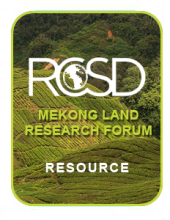Land Library
Welcome to the Land Portal Library. Explore our vast collection of open-access resources (over 74,000) including reports, journal articles, research papers, peer-reviewed publications, legal documents, videos and much more.
/ library resources
Showing items 1 through 9 of 33.This document presents the key findings of the evaluation of an integrated agricultural production and water management project implemented by IFAD in Netrakona district, in northern Bangladesh.
Land policies are of fundamental importance to sustainable growth, good governance, and the well-being of, and the economic opportunities open to, both rural and urban dwellers - particularly the poor.
The vicious poverty–environmental spiral commonly exists due to the interconnectedness of the socioeconomic aspects of farmers and land degradation. The socioeconomic situation of farmers affects their capabilities to implement environmentally viable soil and water conservation measures.
Extensive livestock farming systems in the Less Favored Areas (LFA) of the European Union (EU) are under social stress and requirement to adapt their production practices to new economic and social realities.
The Nigerian savanna soils are low in fertility, organic matter and cation exchange capacity. The traditional method of improving the fertility and productivity of soils of the savanna is through natural fallowing which typically takes three to five years.
Innovation by farmers in land husbandry was the focus of the project Promoting Farmer Innovation (PFI), which was operational in Kenya, Tanzania and Uganda from 1997 to 2001. One of the project's final activities was to document best-bet innovations.
Land ownership does not prevent vulnerability in less developed countries' agriculture and it is demonstrated that land assets do not necessarily imply livelihoods security in areas where irrigation water is scarce and in irregular supply.




